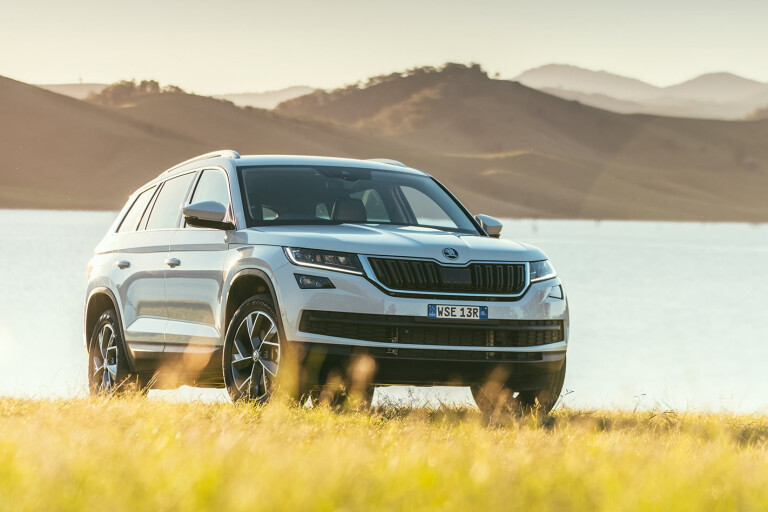
The Skoda Kodiaq represents new territory for the Czech car brand. It’s never had a vehicle this big before, nor has it had a three-row SUV. Arriving in Australia at a time when SUV sales are surging upward, is the big Czech the right package for Aussie families?
TELL ME ABOUT THIS CAR
The Skoda Kodiaq is available in Australia in a single highly-featured specification, with only one engine – a 132kW/320Nm turbocharged petrol in-line four – available from launch. A diesel is expected to arrive before year’s end, and both engines will send power to the ground through a seven-speed dual clutch automatic and all-wheel drive.
And the range is simple: the sole model available right now costs $42,990, with your choice of three option packages, premium paint, a glass sunroof, and alternative wheel designs.
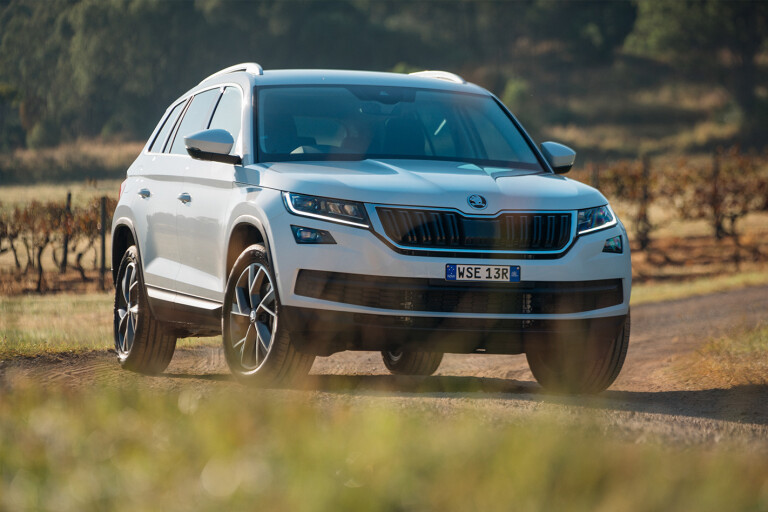
For a full list of the Kodiaq’s features, check out our range rundown here.
We took a Tech Pack-equipped Kodiaq, loaded it up with friends, and went on a road trip to see how it fared on Australian country roads. Given how new Skoda is to this size of vehicle, the Kodiaq makes a very strong case for itself as an alternative to more established large SUVs.
STRENGTHS
Skoda plays the value game well, and the petrol-powered Kodiaq’s $42,990 retail price makes it a keen deal considering its massive equipment advantage over similarly-priced rivals like the Toyota Kluger, Mazda CX-9, and Nissan Pathfinder.
Standard equipment levels are strong, and it’s unlikely to see many tempted to tick option boxes. Dual-zone climate control, a powered tailgate, LED headlamps, keyless entry and ignition, active cruise control, satellite navigation, smartphone mirroring, autonomous emergency braking – all are standard on every Kodiaq, and are in addition to expected luxuries like auto-down power windows and rain-sensing wipers.
While the third row seats may be fairly confined, there is at least a decent amount of space behind them when they’re raised. Cargo space measures in at 270 litres with all three rows raised, while dropping the third row creates a 560-litre volume with the second row slid all the way to the back. Slide the second row forward, and you get 765 litres of cargo capacity. Drop them altogether, and there’s a huge 2005 litres of carrying capacity in total (see below).
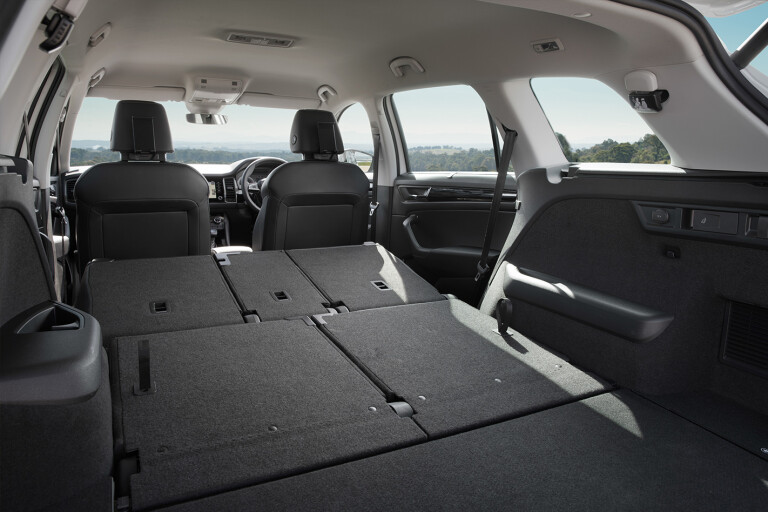
Ride comfort is pretty good. Bar some slight fussiness over small, high-frequency bumps, our Kodiaq tester practically ironed out big highway lumps and bumps with ease. We should note, however, that our Tech Pack equipped car rode on electronically-adjustable dampers, which are able to switch between a sporty and a comfortable tune – the latter obviously being the most agreeable. We can’t yet vouch for the standard, non-adjustable suspension’s tune.
The Kodiaq is loaded with cool and genuinely useful features like flip-out door edge protectors, headrest-mounted tablet holders, a removable boot-mounted LED torch, retractable shopping bag hooks, storage drawers under the front seats, and a twin-glovebox arrangement. All boost the Kodiaq’s everyday liveability score.
Refinement is excellent. The 2.0-litre petrol is a smooth engine and a quiet one when loping along on highways, while wind noise is well-suppressed considering the Kodiaq’s huge frontal area.
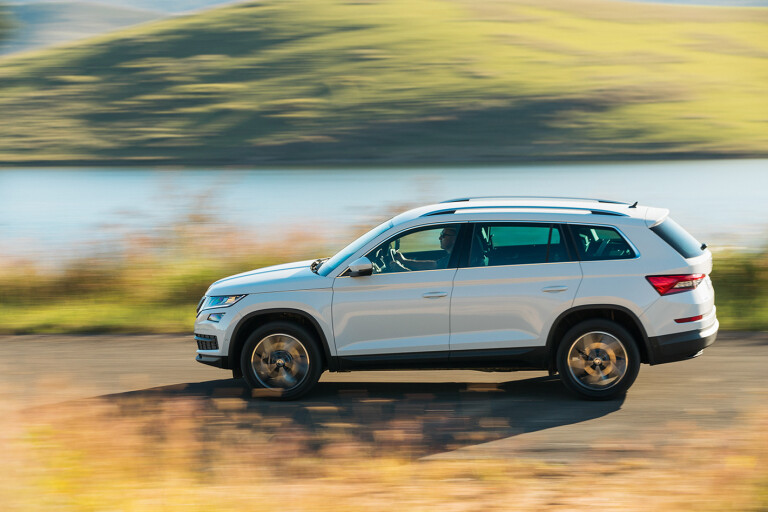
WEAKNESSES
Third row seat comfort isn’t amazing, and roughly on par with smaller seven-seaters like the new Honda CR-V and Mitsubishi Outlander. Headroom in the third row is acceptable, but knee and footroom is lacking for anyone that isn’t a small child. Flat seat cushions also impact comfort, meaning the Kodiaq’s sixth and seventh seats are really for occasional use only.
Engine performance isn’t matched to the Kodiaq’s weight, especially when travelling at highway speeds with four adults and their cargo aboard. Transmission kickdown is slow, which means overtaking needs to be planned carefully.
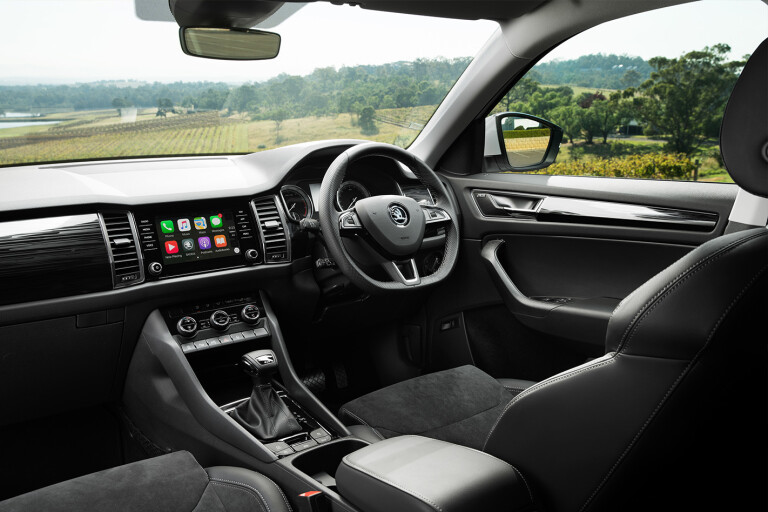
ANY RIVALS I SHOULD CONSIDER?
Given its size, price, and power output, the Kodiaq actually straddles the line between mid-size seven-seaters and proper large three-row SUVs. That means everything from the Honda CR-V and Mitsubishi Outlander to the Nissan Pathfinder, Toyota Kluger, and Mazda CX-9 can be considered as its rivals, with each having their own advantages either in price, comfort, space, equipment or driveability.
Of them, the Outlander is perhaps the weakest rival thanks to its low-quality interior and underwhelming powertrain, not to mention cramped rear seats.
COMMENTS